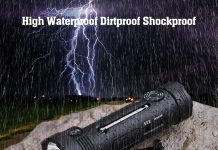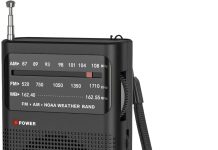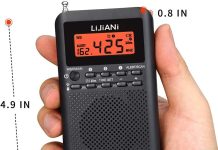Inquiring about the potential costs of using an emergency weather radio? Rest assured, when it comes to using this essential device, there are no subscription fees to worry about. Whether you’re seeking reliable updates during severe weather conditions or simply want to stay informed about the latest forecasts, an emergency weather radio offers a lifeline without any additional financial burden. So, sit back, relax, and let the radio be your trusty companion when it comes to staying informed and prepared for any weather emergency.
Review contents
Overview
What is an Emergency Weather Radio?
An emergency weather radio, also known as a weather alert radio, is a device designed to receive broadcasts and alerts from official weather authorities, such as the National Oceanic and Atmospheric Administration (NOAA) and the National Weather Service (NWS). These radios provide real-time information about severe weather conditions, including tornadoes, hurricanes, flash floods, and other natural disasters. They play a crucial role in keeping individuals and communities safe by providing early warnings and updates during emergency situations.
Importance of an Emergency Weather Radio
Having an emergency weather radio is essential for staying informed and prepared during severe weather events. It allows you to receive timely alerts, warnings, and updates directly from reliable sources, ensuring that you can take appropriate actions to protect yourself, your family, and your property. In emergency situations, where power outages or loss of internet connectivity may occur, an emergency weather radio becomes an invaluable tool as it operates on battery power and receives broadcasts over the airwaves.
Functionality of an Emergency Weather Radio
Basic Features
Emergency weather radios typically come equipped with a range of basic features. These include the ability to receive weather alerts and broadcasts in real-time, as well as the capability to tune into NOAA Weather Radio stations. They also often include a built-in speaker for audio output, an antenna for better reception, and adjustable volume controls. In addition to weather-related information, some models may also offer other features, such as AM/FM radio, alarm clock functions, and flashlight capabilities.
Advanced Features
In addition to the basic features, some emergency weather radios offer advanced functionalities. These may include specific alert filters, allowing you to select the types of alerts you want to receive based on your location and preferences. Some radios also support multilingual alerts, providing information in different languages to cater to diverse communities. High-end models may incorporate additional features like AM/FM/Shortwave bands, LED displays, multiple power sources (e.g., solar, hand-crank, and battery), and USB ports for charging mobile devices.
Cost of an Emergency Weather Radio
Initial Purchase Cost
The cost of an emergency weather radio varies depending on the brand, model, and features it offers. Basic models can typically be found in the range of $20 to $50, whereas more advanced radios with additional capabilities may cost anywhere between $50 and $150. The price difference is primarily due to the quality of construction, additional features, and brand reputation. When considering the purchase cost, it’s important to weigh the features you need against the budget you have available.
Subscription Fees
While many emergency weather radios function without any recurring fees, there are certain radio services that may require a subscription for additional benefits. It’s important to understand the determining factors of these subscription fees and evaluate whether they are applicable to your needs and circumstances.
Determining Factors of Subscription Fees
Type of Radio Service
The type of radio service used by the emergency weather radio can influence the presence of subscription fees. Some radios, like Public Alert Radios, operate based on free broadcasts from government weather authorities, such as NOAA. These radios do not require any ongoing subscriptions and provide access to critical weather information at no additional cost.
On the other hand, certain advanced emergency weather radios may use satellite radio services or weather alert apps that provide enhanced features, broader coverage, and a wider range of alerts. These services often involve subscription fees to cover the cost of the infrastructure, data, and maintenance required to provide such services.
Coverage Area
The coverage area of the emergency weather radio service can impact the subscription fees. Satellite radio services, for example, offer extensive coverage that extends beyond traditional terrestrial radio signals. These services utilize satellites to transmit information, allowing users to receive alerts nationwide, even in remote areas. However, this broader coverage often comes at a higher cost compared to localized services offered by terrestrial radio stations or weather alert apps.
Additional Services
Subscription fees may also be influenced by the availability of additional services provided by the emergency weather radio service. Some satellite radio services offer more than just weather alerts, providing a range of programming options, including music, news, and entertainment. These additional services often contribute to the overall subscription cost, as they require more resources and licensing agreements.
Free Emergency Weather Radio Options
Public Alert Radios
Public Alert Radios, also known as All Hazards Weather Radios, are a type of emergency weather radio that operates on the NOAA Weather Radio network. These radios receive broadcasts from NOAA and provide weather alerts, watches, and warnings at no additional cost. They are designed to automatically activate and sound an alert tone when severe weather conditions are detected in your area. Public Alert Radios are widely available and offer a basic level of functionality without the need for any subscription fees.
NOAA Weather Radio
NOAA Weather Radio (NWR) is a nationwide network of radio stations that broadcast continuous weather information directly from local National Weather Service offices. By tuning into a NOAA Weather Radio frequency on an emergency weather radio, you can receive real-time weather updates, forecasts, and other critical information. NOAA Weather Radio is a free service, and no subscription fees are required to access the broadcasts.
Paid Subscription Options
Satellite Radio Services
Satellite radio services, like SiriusXM, offer comprehensive and reliable weather alerts as part of their subscription packages. These services utilize satellites to provide nationwide coverage and deliver weather information directly to your emergency weather radio. In addition to weather alerts, satellite radio services offer a wide range of programming options, including music, news, sports, and entertainment. Subscription fees for satellite radio services can range from $10 to $20 per month, depending on the package and features selected.
Weather Alert Apps
Weather alert apps, available for smartphones and tablets, have become increasingly popular as an alternative to traditional emergency weather radios. These apps provide real-time weather alerts, radar images, and forecasts directly to your mobile device. While many weather alert apps offer free basic functionality, some advanced features or premium services may require a subscription fee. Subscription costs for weather alert apps typically range from $1 to $10 per month, depending on the app and the level of service provided.
Comparing Subscription Fees
Satellite Radio Services vs Weather Alert Apps
When comparing subscription fees between satellite radio services and weather alert apps, several factors should be considered. Satellite radio services offer more comprehensive and reliable weather alerts, along with a wide range of entertainment options. However, the cost of these services is generally higher, with monthly fees ranging from $10 to $20.
Weather alert apps, on the other hand, provide real-time weather information directly to your mobile device, offering convenience and portability. The subscription fees for weather alert apps are typically lower, ranging from $1 to $10 per month, but they may offer fewer features or a less extensive coverage area compared to satellite radio services.
Cost Analysis
The decision between satellite radio services and weather alert apps should be based on a cost analysis that considers your needs, budget, and desired level of service. If you prioritize comprehensive weather alerts and are willing to pay a higher monthly fee, satellite radio services may be the right choice for you. However, if you are mainly looking for accessible and affordable weather information, weather alert apps may be a suitable option.
Other Factors to Consider
Alternative Options
It’s worth noting that even without subscribing to a satellite radio service or a weather alert app, you can still stay informed and prepared using free resources. Public Alert Radios and NOAA Weather Radio provide critical weather information without any recurring fees. Additionally, local television and radio stations often broadcast weather updates during emergencies. Internet-based weather websites and social media platforms can also be valuable sources for real-time weather information.
Long-term Cost Considerations
While subscription fees are an important consideration, it’s also essential to factor in long-term cost considerations. Emergency weather radios typically require batteries or other power sources for operation. Additionally, radios may need periodic maintenance or replacement of parts to ensure optimal functionality. These costs should be taken into account when assessing the overall affordability and value of the subscription options.
Choosing the Right Subscription Option
Needs Assessment
Choosing the right subscription option for an emergency weather radio requires a thorough needs assessment. Consider the coverage area you require, the level of alert detail you want, and any additional services or entertainment options you may desire. Assessing your specific needs will help determine whether a free option, such as Public Alert Radios or NOAA Weather Radio, or a paid subscription to a satellite radio service or weather alert app is the best fit for you.
Budget
Budgetary constraints should also be taken into consideration when selecting a subscription option. Evaluate your monthly budget and determine how much you are willing to allocate for the ongoing cost of using an emergency weather radio service. It’s important to strike a balance between the level of service you desire and the affordability of the subscription fees.
Conclusion
Weighing the Pros and Cons
When considering whether to use an emergency weather radio with or without subscription fees, it’s important to weigh the pros and cons of each option. Free options like Public Alert Radios and NOAA Weather Radio provide basic functionality without any recurring costs. On the other hand, paid subscription services, such as satellite radio services and weather alert apps, offer enhanced features, broader coverage, and a wider range of alerts.
Importance of Preparedness
Regardless of the subscription option chosen, the key takeaway is the importance of preparedness. Having an emergency weather radio, whether free or subscription-based, empowers individuals and communities to stay informed, make well-informed decisions, and take appropriate actions during severe weather events. By being proactive and prepared, you can prioritize the safety and well-being of yourself, your loved ones, and your property.




























